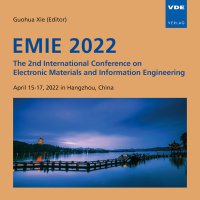Optimal Location and Capacity Planning of PV in AC/DC Distribution Network Based on Improved Particle Swarm Algorithm
Konferenz: EMIE 2022 - The 2nd International Conference on Electronic Materials and Information Engineering
15.04.2022 - 17.04.2022 in Hangzhou, China
Tagungsband: EMIE 2022
Seiten: 5Sprache: EnglischTyp: PDF
Autoren:
Zhao, Qianyu; Han, Zhaoyang; Wang, Shouxiang; Li, Qi (Key Laboratory of Smart Grid (Tianjin University), Ministry of Education, Nankai District, Tianjin, China & Tianjin Key Laboratory of Power System Simulation Control, Nankai District, Tianjin, China)
Dong, Yichao; Mu, Hao (State Grid Tianjin Electric Power Company, Hebei District, Tianjin, China)
Inhalt:
Distributed generations (DG) such as photovoltaics (PV), as renewable energy sources, can be continuously obtained from nature and have the characteristics of flexible integration and environmental friendliness. The location and capacity of PV is an important part of the planning and design of AC and DC distribution network, it is related to the distribution of AC and DC distribution network voltage, and affects the stability of the entire AC and DC distribution network voltage. In this paper, firstly, a PV location and capacity optimization model is built with the goal of minimizing the annual investment cost of PV and the expected value of network loss. Then, an Immune Chaos Hybrid Particle Swarm Optimization (ICHPSO) method is adopted to solve the planning of the PV system in AC and DC distribution network. Finally, the configuration optimization method is implemented and verified with test systems. The results show that the proposed planning method realizes the improvement effect of PV on the node voltage, and the optimization algorithm used has good convergence characteristics and the ability to quickly find the global optimization. Compared with the results of deterministic analysis, the annual investment cost when considering the uncertainty of the load source is smaller, and it can better reflect the actual situation, which verifies the rationality of the planning model proposed in this paper.


